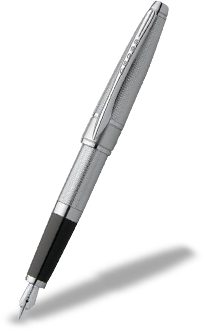JAGAN’S DREAM OF A NATIONAL FRONT GOVERNMENT
In a letter to the Stabroek News on June 28, 2025, Dr. Narayan Persaud Ph.D., Professor Emeritus, made the preposterous claim that “Guyanese can objectively observe for themselves that the current PPP/C administration exemplifies the essence of a National Front Government.” Dr. Persaud was not talking about any national front government. He was talking about Dr. Jagan’s conception of a National Patriotic Front Government (NPFG). His letter is headlined: “Current PPP/C administration realizes Dr. Jagan’s dream of a National Front Government.” In describing Dr. Jagan’s ideas, Dr. Persaud said: “In sum, as Dr. Jagan envisioned, the NFG would be a coalition government constituted of all progressive political parties. Dr. Jagan believed that such governmental formation would result in the creation of a racially mixed political structure with equal representation and distribution of power.” This is not quite what Dr. Jagan “envisioned.”
Dr. Persaud’s view as to the nature and composition of the current PPP/C Government is not the issue in contention. That view is set out by him thus: “Today, Guyanese can objectively observe for themselves that the current PPP/C administration exemplifies the essence of a National Front Government. President Irfaan Ali, Vice President Bharrat Jagdeo, and Prime Minister Mark Phillips, along with the political and racial composition of government ministers, administrators, and ambassadors, all confirm with the hallmarks of a formidable and unique National Front Government.” My objection is that Dr. Persaud’s view that the Government’s composition reflects Dr. Jagan’s conception of the NPFG is far from the reality. This framework is not consistent with Dr. Jagan’s paper on “For a National Patriotic Front Government” discussed at the PPP’s Central Committee on the 6 and 19 June 1977 and approved at a meeting on 7 August 1977.
It was about fifty years ago that the PNC administration began to take progressive steps in economic and foreign policies. Guyana became a member of the Non-Aligned Movement in 1969. The Demerara Bauxite Company was nationalized in 1971. Cuba and China were recognized in 1972. The sugar industry was nationalized in 1976. The banks followed shortly after. Political relations with socialist countries, such as Cuba, the Soviet Union and China, began to intensify. The PNC’s rhetoric had become decidedly pro-socialist. While the PNC retained the support of the US, because the alternative was the ‘communist’ PPP, the latter began to recognize the possibility of the destabilisation of Guyana’s movement in a progressive direction. Internal and external pressures combined to cause the PPP to review its hitherto implacable opposition to the PNC. In 1976 Ranji Chandisingh, Dr. Jagan’s deputy, and several others, in a severe blow to the PPP, resigned and joined the PNC, citing the failure of the PPP to give more robust support to the PNC. Pursuant to this review, the PPP announced “critical support” for the PNC Government in 1975, but it did not lead to improved relations.
This was the background that prompted the PPP to launch the NPFG proposals in 1977. Dr. Jagan proposed that such a government would include progressive and anti-imperialist groups committed to a socialist or non-capitalist path of development. The Government would be based on a “winner does not take all system.” There would be an executive president, a prime minister and national assembly elected by free and fair elections. The president would be elected by the people or by the national assembly. The prime minister would be drawn from the party with majority support and would preside over the cabinet which would be drawn from each party in proportion to its strength in the national assembly. Whichever party won the elections and is entitled to hold the post of prime minister would not oppose the candidacy for the presidency from the other major party. There would be an agreed programme, democracy at all levels, involvement of workers in management and decision-making and freedom for trade unions and other democratic bodies to work without interference.
The NPFG therefore encompassed two major objectives: (a) political and national unity by the formation of a government of at least the two major parties composed as described above; and (b) a pro-socialist programme and support for a progressive, anti-imperialist foreign policy.
Socialism of the type that was discussed in the NPFG is no longer considered feasible today. Even the language in the NPFG describing the programme is already dated. As proposed by the NPFG, the kind of programme and the nature and some aspects of the structure of the proposed government would notbe acceptable by at least a party with the potential of becoming the majority party. But the principle behind “winner does not take all”, which Dr. Jagan supported since 1976 up to the 1992 elections, was jettisoned by the PPP after 1992, has always been relevant. The source of Guyana’s political instability which resulted in rigged elections, political violence, and accusations of marginalization, is and always was, the persistence of ethnically divided politics which gives rise to the ceaseless drive for ethno-political dominance. The governance structure based on “winner does not take all” was one of the two aspects of Guyana’s political condition that Dr. Jagan sought to address in the NPFG.





